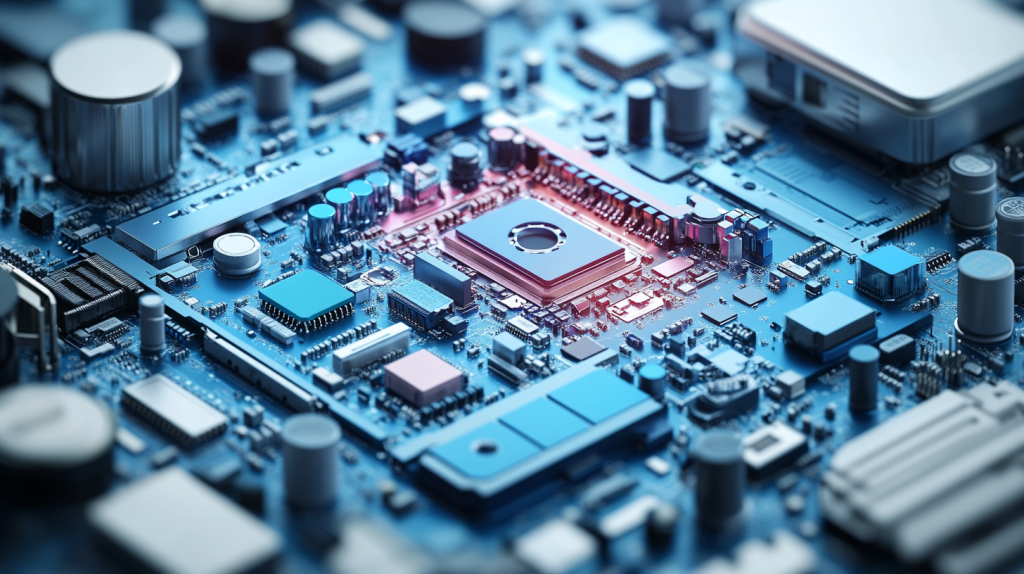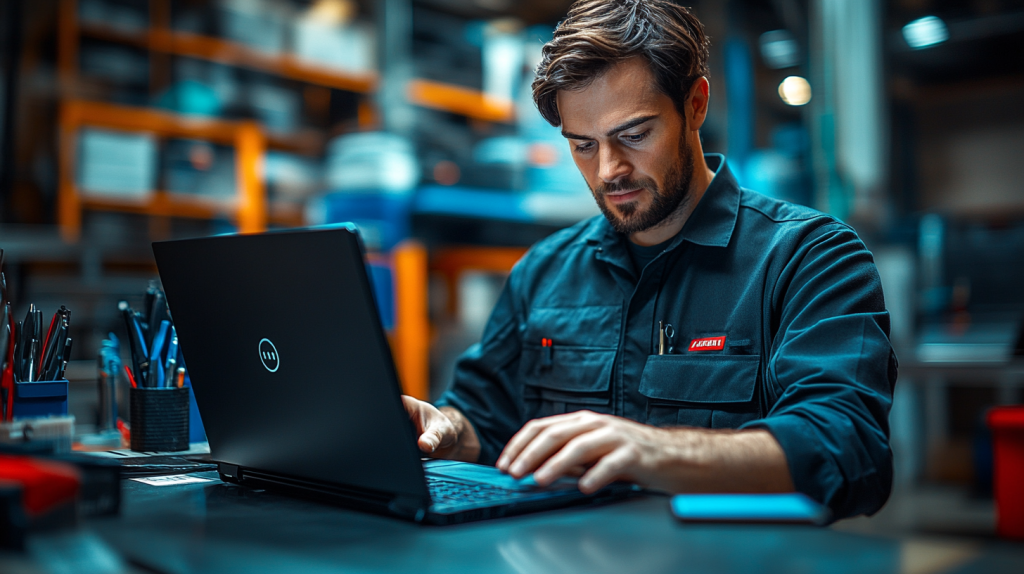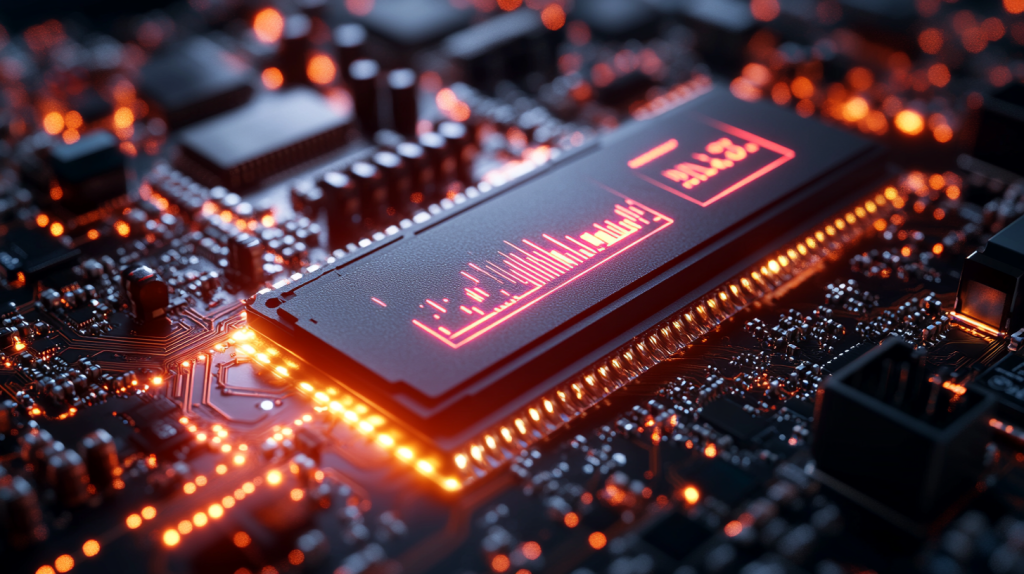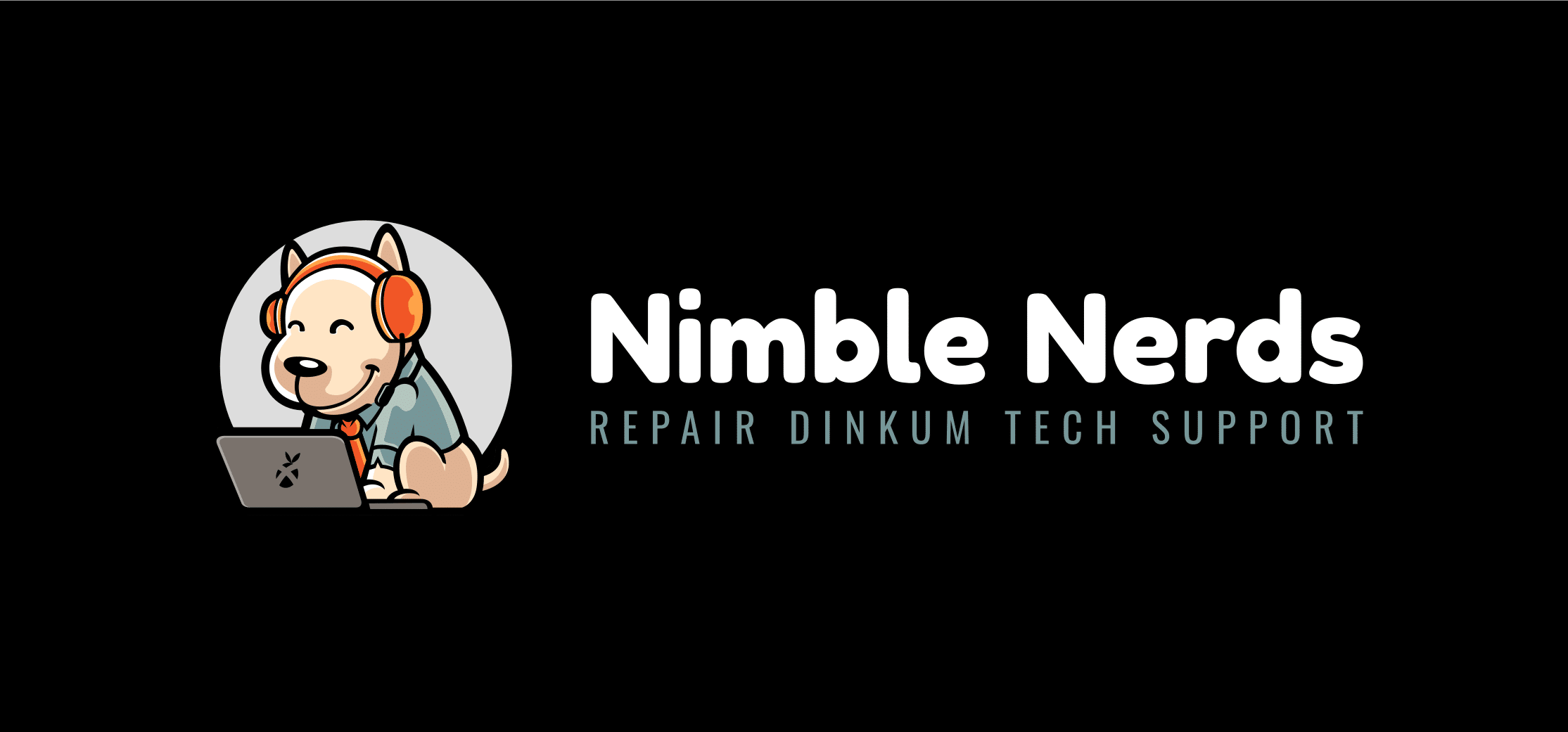Do you need help choosing your next laptop? Well, finding the right laptop can be overwhelming, with countless options and technical specifications to consider. At Nimble Nerds, we understand the importance of finding the perfect device for your needs and budget. That’s why we’ve created this comprehensive guide to help you make an informed decision. Did you know that the average person keeps their laptop for about 5 years? That’s why it’s crucial to choose wisely!
If you’re in Sydney and struggling with laptop issues — physical damage, performance slowdowns, or something just not working — we’re here to help. Our technicians can repair, upgrade, or optimise your device without the jargon.
The Real Deal: Why Laptop Prices Matter (But Not How You Think)

Let me tell you something that might surprise you – after 15 years of helping folks choose the best laptops, I’ve learned that the sweet spot for pricing isn’t where most people think it is. Just last week, I had a client come in adamant about getting a $399 laptop from a big box store. Been there, and seen that story play out too many times to count.
Here’s the truth that marketing won’t tell you: most laptops under $800 often end up being the most expensive ones in the long run. Why? Because they’re built with components that aren’t meant to last. I’ve seen countless customers return within 18 months, facing repair costs that could have covered the difference for a better model in the first place. That $399 laptop? It usually comes with a slow mechanical hard drive, 4GB of RAM that’s soldered in (meaning you can’t upgrade it), and build quality that makes me wince.
Helping You Choose Your Laptop- Budget Sweet Spot

The real magic happens in the $1000-$1500 range. At this price point, you’re getting solid build quality, upgradeable components, and – this is crucial – a machine that’s actually pleasant to use. Think of it this way: if you’re keeping the laptop for 5 years (which is average), that’s about 80 cents a day for a $1500 laptop. Suddenly doesn’t seem so expensive, does it?
The Hidden Costs of “Budget” Laptops
I can’t tell you how many times I’ve had to break the news to someone that their $500 laptop needs a $400 repair after just a year. The math just doesn’t add up. These budget models often use cheaper plastics that crack easily, lower-quality hinges that wear out faster, and power components that run hot because of inadequate cooling. It’s not just about the specs – it’s about the engineering and build quality that you can’t see in a store display.
Laptop Recommendation Calculator
Your Recommended Configuration:
Why Refurbished Laptops Are My Secret Weapon for Smart Shoppers

Some of the best laptop deals I’ve ever recommended weren’t even new machines. After spending years helping frustrated students who bought cheap new laptops, I’ve become a huge advocate for quality refurbished yet very capable devices. And I’m not talking about those sketchy eBay listings – I mean properly refurbished business-class laptops.
Here’s what blows my mind: you can get a refurbished ThinkPad or Dell Latitude that originally cost $2000+ for about the same price as a new cheap laptop. The difference in build quality is night and day. These machines were built to survive coffee spills and backpack tosses, unlike those flimsy consumer models that seem to fall apart if you look at them wrong.
The Truth About Business-Class Refurbs
The secret that most people don’t know is that business laptops are designed completely differently from consumer models. They’re built with better materials, are power efficient, and have superior cooling and operating systems, too. This is huge; they’re made to be repaired and upgraded. Just last month, I helped a medical student grab a refurbished ThinkPad with a warranty. She got a professional-grade laptop with 16GB RAM, an M.2 SSD (solid state drive), and a battery life that lasts all day. All for less than what her classmates paid for new budget models that were already showing wear and tear.
What to Watch Out For
Now, I’ll be straight with you – not all refurbished laptops are created equal. When I’m sourcing refurbished machines, other than the ones I’ve mentioned, there are other features I also look for. For instance, manufacturer refurbishment (not third-party), at least a 12-month warranty, and business-class models that originally sold for $1500+. The sweet spot is usually 1-2 year-old ex-corporate models convertible laptops. These ones have been professionally cleaned, tested, and upgraded with modern components like SSDs (solid state drive).
Touch Screens: The Feature You Think You Want (But Probably Don’t Need)

Let me share something that might save you a few hundred bucks. After seeing hundreds of touch screen laptops come through our shop, I’ve developed a pretty strong opinion about them. Remember when everyone thought 3D TVs were the next big thing? Yeah, touch screens on laptops often fall into that same category of “cool in theory, not so much in practice.”
I had a client last year who insisted on a touch screen laptop for a larger display for her graphic design work. Six months later, she was back in my shop with a frustrating problem. Apparently, her screen had developed this weird “ghost touch” issue. That means it would randomly register inputs whenever she’s playing games or watching movies in it. The repair quote? Almost half the cost of the original laptop screen. That’s when she admitted she’d barely used the touch feature anyway.
The Hidden Drawbacks Nobody Mentions
Here’s what the marketing folks don’t tell you about touch screens: they’re battery vampires, typically using 15-20% more power than non-touch displays. Plus, they add weight, reduce brightness (thanks to that extra digitizer layer), and create more glare. And the smudges? If you’re even slightly particular about a clean screen, you’ll drive yourself crazy wiping fingerprints off larger screen sizes every few hours.
When Touch Makes Sense (It’s Rare, But It Happens)
Now, I’m not saying touch screens are never worth it. If you’re getting a 2-in-1 laptop that actually converts into a tablet, and you have a specific use case (like digital note-taking or artwork), then sure. But for standard laptop use? In my experience, 90% of people who buy touch screen laptops end up using the feature about as often as they use their printer’s fax capability – rarely.
The Speed Secret: Why M.2 SSDs and RAM (Random Access Memory) Are Your Laptop’s Best Friends

Look, I’ve got to be real with you – nothing breaks my heart more than seeing someone drop good money on a laptop with great specs but skimp on storage and RAM. It’s like buying a sports car and putting budget tires on it. After upgrading hundreds of laptops and desktop computers over the years, I can tell you that M.2 SSDs and proper RAM are absolute game-changers.
Just last month, I had a client bring in his “slow” laptop. Specs looked decent on paper – recent i5 processor, dedicated graphics – but it was crawling along and couldn’t handle his demanding tasks. The culprit? A mechanical hard drive and 8GB of RAM. After swapping in an M.2 SSD and bumping up to 16GB of RAM, it was like we’d given him a completely new laptop.
Why M.2 SSDs Are Worth Every Penny
Here’s the thing about M.2 SSDs – they’re not just faster, they’re more reliable. Traditional hard drives have moving parts that can fail (especially in laptops that get bumped around), while M.2 SSDs are solid state. The speed difference in its processing unit isn’t just noticeable; it’s jaw-dropping. We’re talking about your laptop booting up in seconds instead of minutes, and programs opening instantly instead of making you wait while that little loading circle spins.
The New RAM Reality
Let me drop some truth about RAM – 8GB is the new 4GB on modern laptops, and 16GB is the new 8 GB. I know that sounds like a lot, but modern web browsers can easily chew through 4GB just by running a few tabs with social media open and most tasks. When you’re trying to actually get work done, 16GB gives you the headroom to have multiple programs open without your laptop turning into a slideshow. And here’s a pro tip – if you’re buying a laptop with soldered RAM (meaning you can’t upgrade it later with more memory), always go for 16GB. Future you will thank the present you for that decision.
Storage Space: The Numbers Game That Actually Matters

After years of helping clients recover data from full drives and watching people struggle with storage decisions, I’ve developed a pretty clear picture of how much storage capacity different users really need. Let me tell you, nothing’s worse than that panic-inducing “Low Disk Space” warning popping up right before an important deadline. And no, simply deleting your downloads folder doesn’t always give you more storage either.
I recently helped a photography enthusiast who bought a laptop with a 256GB SSD because the salesperson told her “everything’s in the cloud nowadays.” Three months later, she was in our shop, stressed out because her photo editing software was crawling due to lack of space. Here’s the reality: while the cloud is great for backups, trying to actively work with files directly from it is like trying to drink a milkshake through a coffee stirrer – technically possible, but not efficient.
Real-World Storage Requirements
Let me break this down into real numbers, based on what I’ve seen work for different users. The base Windows 11 installation alone takes up about 30GB, and that’s before you add any programs and other popular apps. For basic users (web browsing, documents, light photo storage), 512GB is your sweet spot. For creators working with photos, videos, or large files, 1TB should be your minimum. And here’s a pro tip: always leave at least 20% of your drive space free – SSDs slow down significantly when they’re too full.
The Cloud Storage Reality Check
Cloud storage is fantastic for backup and sharing, but it’s not a complete solution for primary storage. Why? Because internet connections aren’t always reliable or fast enough for real-time access, and most cloud services charge monthly fees that add up over time. Plus, try editing a 4K video directly from the cloud – you’ll quickly understand why local storage matters. I recommend using cloud storage as a backup solution and keeping your active projects on your local drive.
Component Priority Guide
Your Component Priorities:
Must Have:
Nice to Have:
Skip It:
Watch Out For:
Smart Shopping: Where to Get the Best Laptop Deals (Without Getting Burned)

I’ve got to be honest – after seeing thousands of laptops come through our shop, I’ve noticed some pretty clear patterns about where the best (and worst) deals come from. OfficeWorks, surprisingly enough, has consistently been one of our top recommendations for new laptops. Why? They’ve got this interesting business model where they bulk-purchase business-class laptops, which lets them offer better price points than most competitors.
But here’s something most people don’t know – timing is everything. I had a client who saved nearly $400 on a high-end laptop just by waiting for OfficeWorks’ end-of-financial-year sale. These sales aren’t just random discounts; they’re often clearing out entire model lines to make room for new stock. And unlike some retailers who jack up prices before sales (you know who you are), OfficeWorks tends to play it straight with their discounts.
Beyond the Big Box Stores
Here’s a secret that most salespeople won’t tell you: authorized business resellers often have access to models you won’t find in retail stores. These machines typically have better build quality and fewer bloatware issues. Just last month, I helped a small business owner source five laptops through a business channel – not only did they get better machines, but they also saved about 15% compared to retail prices.
The Price-Matching Game
Now, let me share a pro tip about price matching. Most people think it’s just about finding the lowest advertised price, but there’s more to it. Many retailers will also match their own historical prices if you can prove they offered it for less within the last 30 days. I keep a spreadsheet tracking laptop prices across major retailers (yes, I’m that kind of nerd), and I’ve noticed that prices often drop significantly about every six weeks. If you’re not in a rush, watching these cycles can save you serious money.
Desktop vs Laptop: The Truth About Performance and Value

Let me share something that might surprise you – in my years of building custom PCs and fixing laptops, I’ve noticed a fascinating trend. Every time someone comes in wanting a $1500 laptop for heavy workloads like video editing or gaming, I can’t help but think about how much more they could get with a desktop setup. Here’s the kicker: that same budget could get you a seriously powerful desktop plus a basic laptop for mobility.
Just last week, I built a custom desktop for a graphic designer who was initially dead-set on a high-end laptop. For the same price as the laptop she was considering, she got a desktop with double the performance, a professional-grade monitor with better color accuracy, and yes – even a basic laptop for client meetings. Two years from now, when she wants more power, she can upgrade individual components instead of replacing the entire system.
The Repair Reality Check
Let me tell you something that keeps laptop repair shops in business – when a laptop’s motherboard fails outside warranty, the repair often costs more than the laptop is worth. With desktops? We can usually swap out the failed component for a fraction of the cost. I had a client bring in both his gaming laptop and desktop last month with similar issues. The laptop repair quote was $800 due to a failed motherboard. The desktop? $150 for a new power supply. That’s the difference in repairability we’re talking about.
The Hidden Benefits of Going Desktop
Here’s what most people don’t consider about desktops: they’re actually more environmentally friendly in the long run. Why? Because you can upgrade components as needed instead of replacing the entire operating system every few years. Plus, they run cooler (which means better performance and longevity), use standard parts (which means cheaper repairs), and give you the flexibility to choose your perfect monitor setup. And with modern desktops being smaller and more stylish than ever, the old “they take up too much space” argument isn’t as relevant anymore.
Extended Warranties: The Truth From Someone Who’s Seen Every Type of Laptop Failure

Let me share something – sometimes extended warranties are actually worth it. But here’s the catch: it completely depends on the laptop model and the warranty terms. After seeing thousands of laptop failures over the years, I’ve developed a pretty good sense of which warranties are worth the paper they’re printed on.
You know those OfficeWorks extended warranties everyone tries to sell you? They’re actually one of the better ones out there, but not for the reasons you might think. Here’s a real story: Last month, a client brought in a laptop with a cracked screen. The manufacturer’s warranty wouldn’t cover it because it was “physical damage,” but their OfficeWorks extended warranty replaced the entire laptop. Why? Because their policy covers accidental damage, and they often find it cheaper to replace than repair.
When Warranties Actually Make Sense
Here’s my rule of thumb for extended warranties: if you’re buying a laptop with a touch screen, convertible hinges, or any moving parts beyond the basic lid – seriously consider it. These components are basically ticking time bombs of repair costs. But for a basic laptop? Save your money and put it toward better specs instead. I’ve seen too many people spend $300 on a warranty for a $600 laptop. Truth is, that money could have bought them a much better machine in the first place.
The Fine Print That Matters
Let me tell you what to actually look for in a warranty: accidental damage protection. This is crucial for coverage for battery replacement (batteries typically start failing right after the standard warranty expires). Most importantly – on-site service for business users. Nothing’s worse than being without your work laptop for weeks while it ships back and forth for repairs. Pro tip? Some credit cards automatically extend your manufacturer’s warranty by a year. Just check your benefits before paying for extra coverage.
Why Nimble Nerds Isn’t Your Average Tech Shop

Let me tell you something about how we do things differently at Nimble Nerds. After years of watching people get burned by one-size-fits-all tech solutions and confusing jargon, we decided to take a more human approach. Think of us as your tech-savvy friend who actually explains things in plain English and genuinely wants to help you make the best decision for your needs – even in helping you choose your next laptop.
I remember helping a retired teacher who came in almost in tears. Another shop had told her she needed to spend $2,000 on a new laptop just to check her email and do some light web browsing. After sitting down with her for about 15 minutes, we figured out the solution. A refurbished business laptop with upgraded RAM would do everything she needed – at less than half the price. That’s the kind of practical, honest advice we pride ourselves on.
Our Approach to Custom Solutions
Here’s what makes us different: we don’t just sell you a computer – we help you choose the right laptop solution for your specific situation. Need a desktop computer that can handle video editing but also want to keep costs down? We might suggest starting with a solid base system and a upgrade path for the future. Have a laptop that’s running slow? Instead of pushing you toward a new purchase, we’ll honestly tell you if a simple RAM upgrade or SSD installation could give it new life.
The Nimble Nerds Difference
When you work with us, you get access to our decades of combined experience in both repairs and custom builds. We’ve seen it all – from simple upgrades to complex custom desktop builds. And here’s something you might not expect: sometimes we’ll actually talk you out of spending more money. Why? Because building long-term relationships with our clients is more important to us than making a quick sale. That’s why most of our business comes from word-of-mouth referrals.
If you’re in Sydney and struggling with laptop issues — physical damage, performance slowdowns, or something just not working — we’re here to help. Our technicians can repair, upgrade, or optimise your device without the jargon.
Final Thoughts: Making Your Tech Investment Count
After spending over a decade helping people with their computer purchases and repairs, I’ve learned that choosing the right laptop or desktop isn’t just about specs and features – it’s about finding the right tool for your specific needs. Whether you’re a student looking for a reliable refurbished laptop, a professional needing a powerhouse desktop, or someone who just wants a dependable machine for everyday use, the key is making an informed decision based on real-world performance and value.
Remember what I always tell my clients: the best computer isn’t always the most expensive one, but it’s rarely the cheapest either. Take your time, ask questions, and don’t let flashy marketing or high-pressure sales tactics rush you into a decision you might regret. And hey, if you’re ever feeling overwhelmed by all the options out there, that’s exactly why we’re here at Nimble Nerds – to help you navigate the tech landscape with honest, practical advice.
Frequently Asked Questions
From my experience, a refurbished business-class laptop is your best bet. Look for a Dell Latitude or ThinkPad with an M.2 SSD and at least 16GB of RAM. These machines are built to last and typically cost 40-50% less than their original price while offering better build quality than new budget laptops.
For 2024, 16GB is the sweet spot for most users. While you can get by with 8GB, I’ve seen too many people regret not spending the extra money on more RAM. If you’re doing any kind of content creation or running multiple programs at once, 16GB will save you from frustrating slowdowns.
As someone who’s repaired countless gaming laptops, I’ll be straight with you – unless you absolutely need the portability, a gaming desktop will give you much better value. Gaming laptops tend to run hot, which often leads to slower speeds, performance issues, and shorter battery life. Plus, when they do need repairs, they’re significantly more expensive to fix than standard laptops or desktops.
This is one I get asked about a lot. You’ll want at least 16GB of RAM (32GB is better), a dedicated graphics card, and crucially – an M.2 NVMe SSD with at least 1TB of storage. I’ve seen too many people focus only on the processor but forget about the importance of fast storage for handling large video files.
Based on what I’ve seen in our shop, it’s possible but not ideal. A budget laptop often throttles performance under heavy loads due to inadequate cooling. If you need to run demanding software, you’re better off investing in a mid-range laptop with better thermal management or considering a desktop setup.
While processors are important, I’ve found that many people overemphasize CPU (central processing unit) specs while undervaluing equally important components like RAM and storage type. A last-gen i5 or Ryzen 5 with plenty of RAM and an SSD will often feel faster than a current-gen i7 with less RAM and a mechanical drive.
After helping hundreds of clients with this decision, I’ve found that 14″ hits the sweet spot for screen sizes for most of the users. It’s large enough to work comfortably but small enough to carry easily. That said, if you’re doing detailed work like CAD or video editing, consider a 15.6″ screen.
In my experience, Chrome OS laptops can be excellent for specific use cases – particularly if you primarily use web-based applications and Google services. However, Chrome OS is not a direct replacement for Windows laptops. I often recommend them to clients who mainly need web browsing, email, and basic document editing.
After years of helping clients maximize their laptop’s battery life, I’ve found that the biggest impact comes from proper power settings and avoiding excessive heat. Using balanced power plans, keeping your laptop cool, and avoiding complete battery drain can significantly extend the battery life of laptop hardware.
I could write a book about this! Desktop PCs offer better value for money, easier upgrades, better cooling (which means better performance and longevity), and much cheaper repairs. Plus, you can upgrade components individually instead of replacing the entire operating system when you need more power.




















